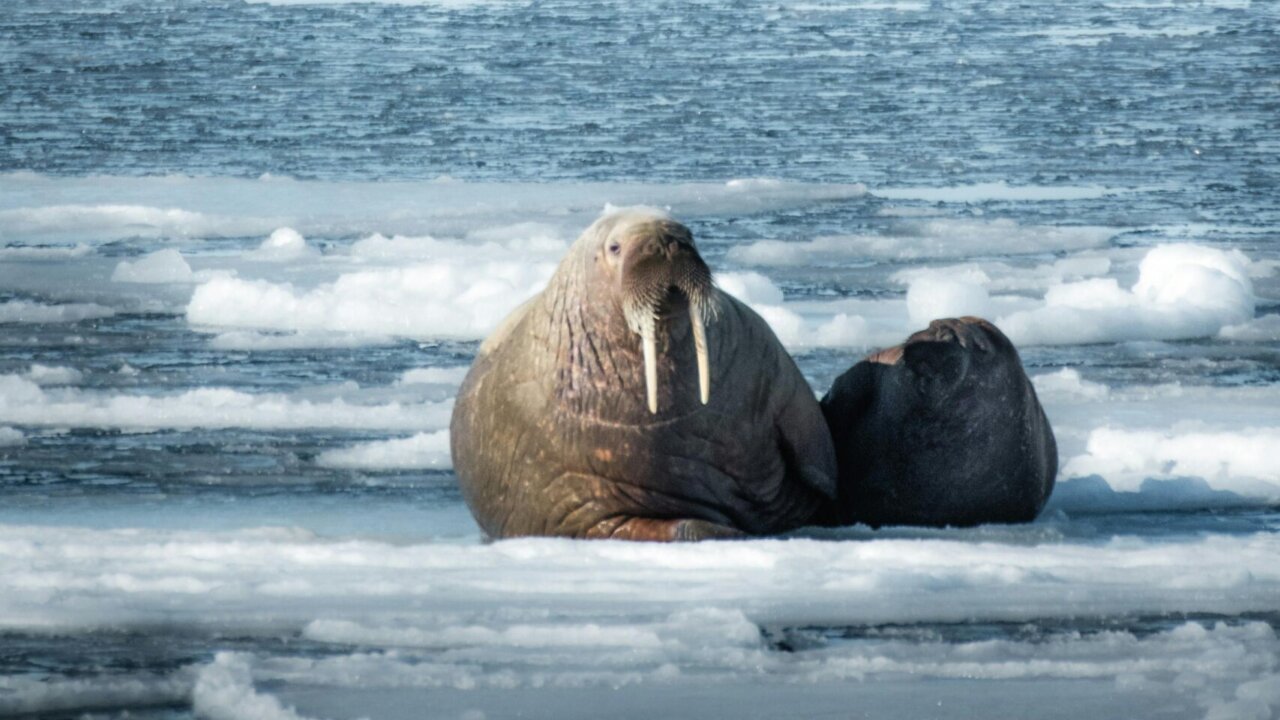
Pexels/ Tomáš Malík
Walrus (Odobenus rosmarus): a large pinniped marine mammal.
Kingdom: | Animalia
Phylum: | Chordata
Class: | Mammalia
Order: | Carnivora
Clade: | Pinnipedia
Family: | Odobenidae
Genus: | Odobenus
Species: | O. rosmarus

Pexels/ Francesco Ungaro
Size and Weight:
Adult male walruses, called bulls, can reach lengths of up to 11 feet and weigh as much as 3,700 pounds. Females are smaller, averaging 9 feet long and 2,700 pounds. Calves weigh 100–130 pounds at birth.
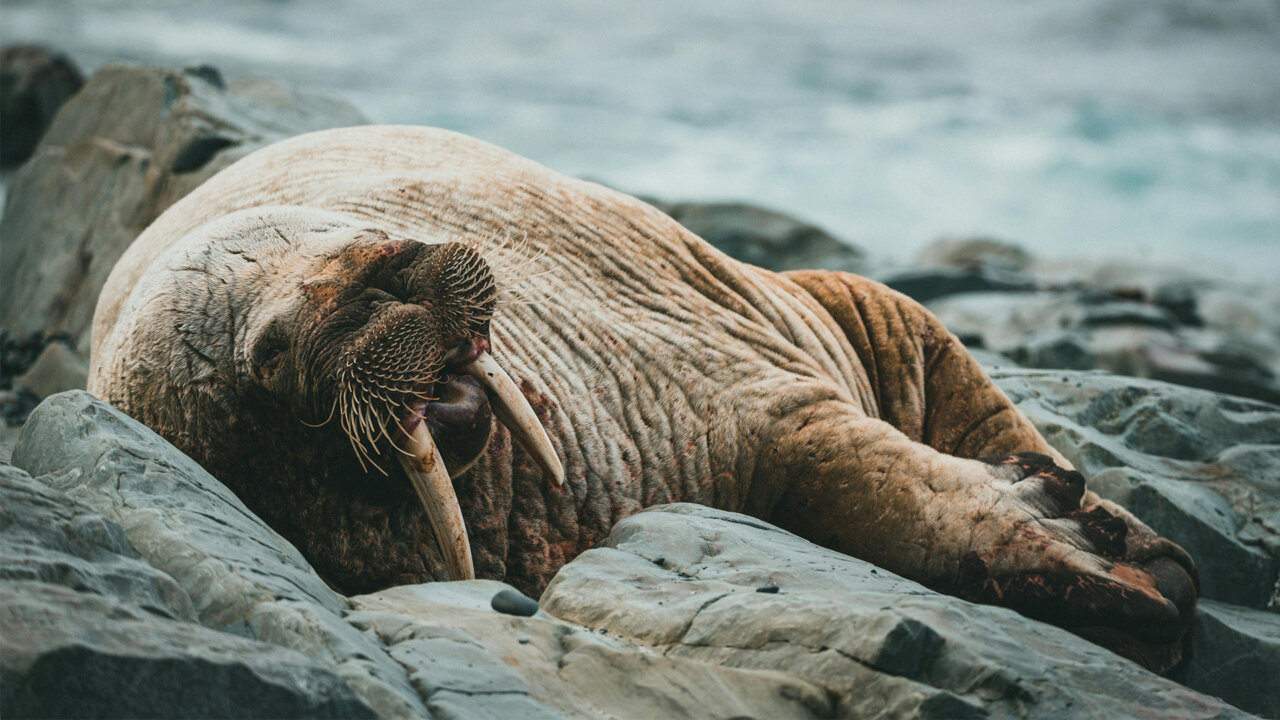
Pxels/ Jonathan Cooper
Appearance:
Walruses are easily recognized by their long tusks, whiskered snouts, and wrinkled, pink-brown skin. Both males and females have tusks — elongated canine teeth that can grow up to 3 feet long. Walruses use their tusks for defense, dominance displays, and to help haul themselves out of the water. Their thick skin is covered in sparse, short hair, with a heavy layer of blubber beneath to provide insulation in icy waters. In warmer conditions walrus’ skin turns pink due to increased blood flow near the surface.
Did you know? The name Odobenus means “tooth-walker,” describing how walruses use their tusks to pull themselves up onto the sea ice.
Diet:
Walruses are bottom feeders, eating primarily clams, mussels, snails, marine worms, and sea cucumbers found on the sea floor. Using their sensitive vibrissae (whiskers) to locate prey, walruses use their mouths to create strong suction and pull soft-bodied animals from their shells. Occasionally large males may feed on fish or even small seals. Learn more about how they eat their prey here.
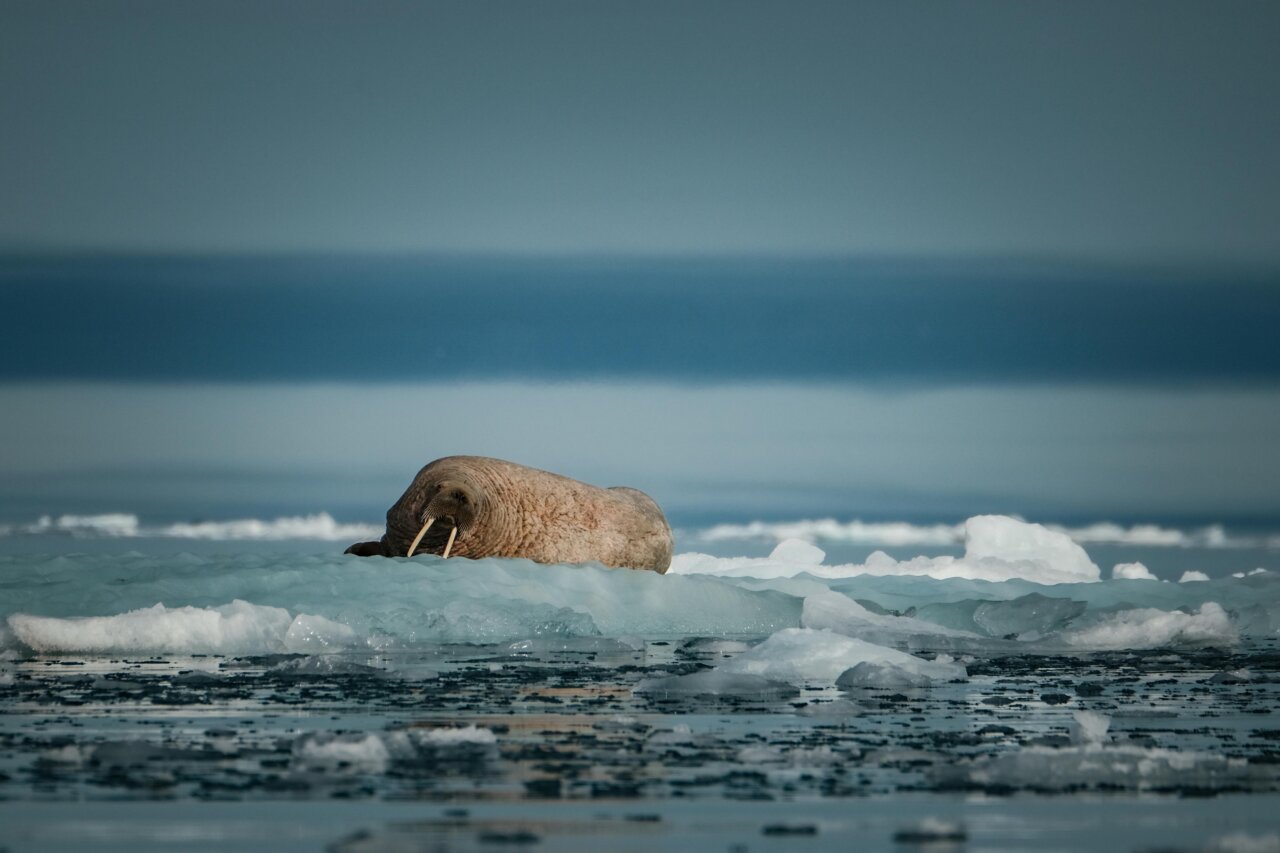
Pexels/ Francesco Ungaro
Habitat:
These marine mammals depend heavily on platforms of sea ice for resting, giving birth, and accessing feeding areas. They prefer shallow, continental shelf waters where they can easily dive to the seabed in search of food.
Geography:
Walruses live throughout the Arctic Ocean and sub-Arctic seas. There are two main subspecies:
- Atlantic walrus (Odobenus rosmarus rosmarus): Found from northeastern Canada to Greenland and Svalbard.
- Pacific walrus (Odobenus rosmarus divergens): Found in the Bering and Chukchi Seas, from Alaska to eastern Russia.
- A smaller, less-studied population, the Laplacian walrus, once lived in the Laptev Sea but may now be extinct.
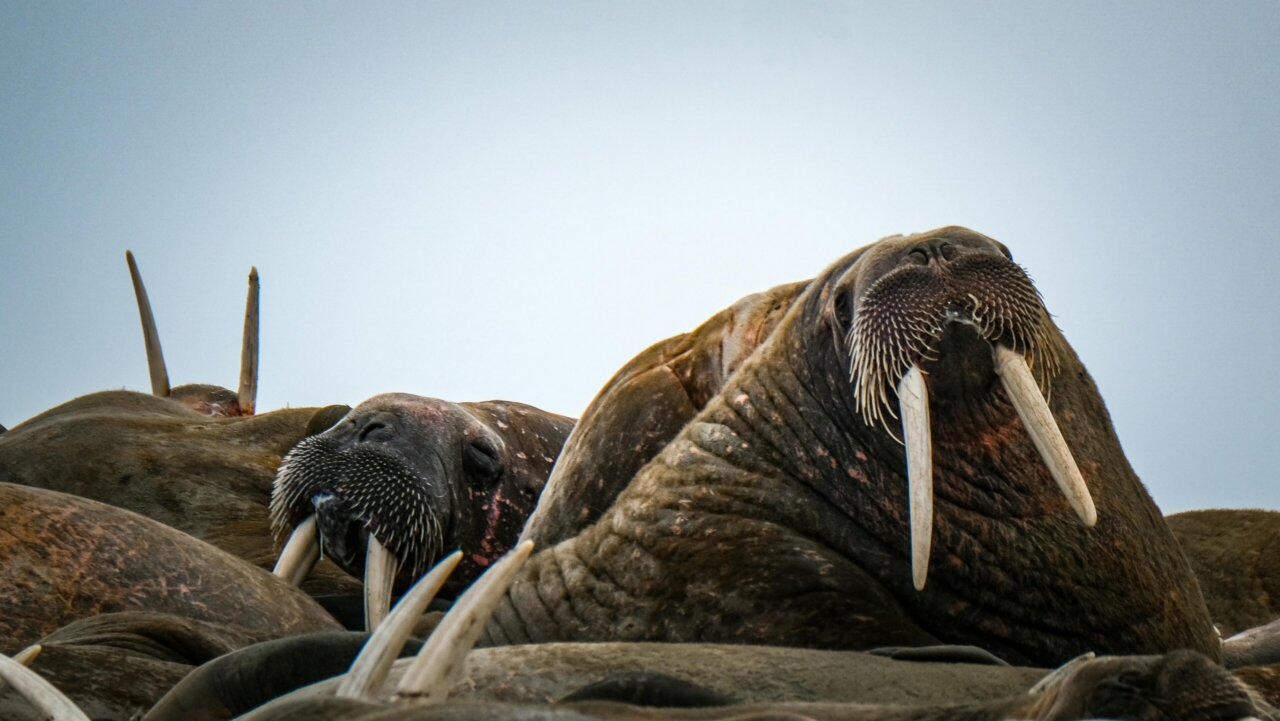
Pexels/ Francesco Ungaro
Breeding:
Breeding takes place in the water during the winter and early spring. After a gestation period of 15-16 months (including delayed implantation), females give birth to a single calf, usually on sea ice. Calves nurse for over a year and may stay with their mothers for up to two years.
Social Structure:
Walruses are highly social and spend much of their time in large herds known as haul-outs. These groups can number from dozens to thousands of individuals. Males often form separate groups during the non-breeding season, while females and calves stay together for protection and social bonding.
For walruses, vocal communication is key. Males produce loud bell-like sounds underwater during mating season to attract females and establish dominance. Walrus gatherings can be heard more than a mile away.
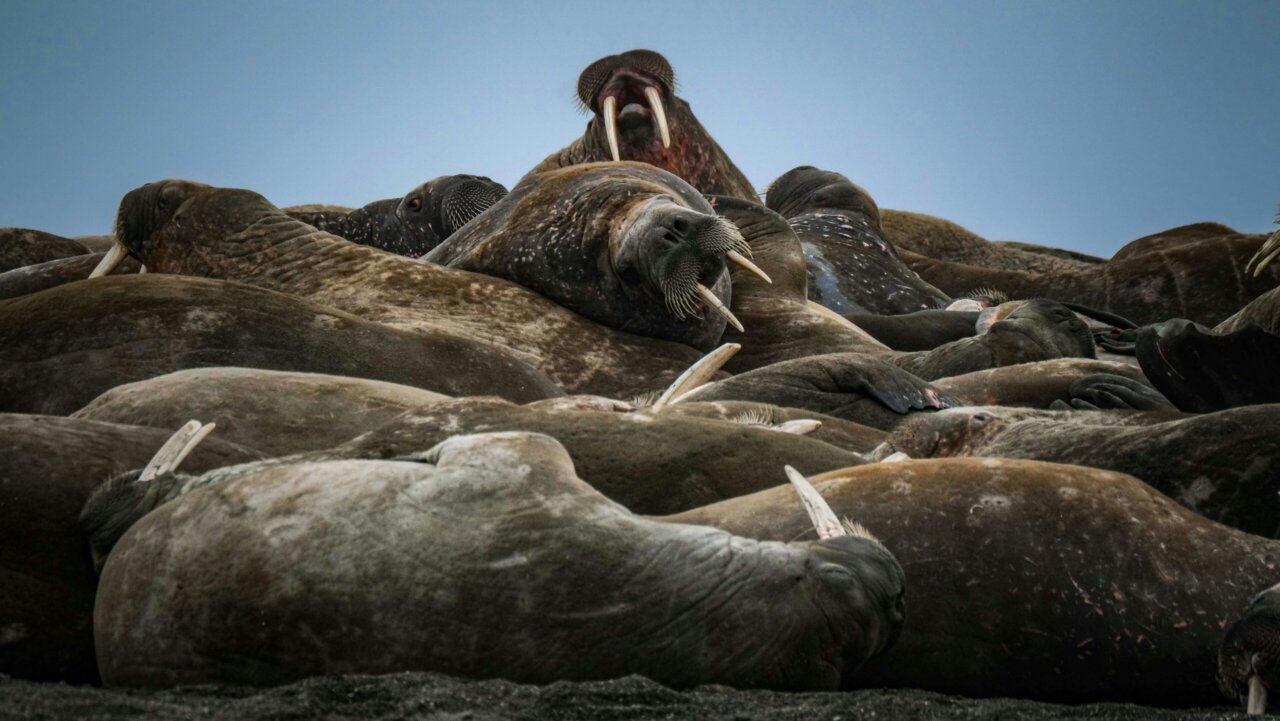
Pexels/ Francesco Ungaro
Lifespan:
Walruses can live up to 40 years in the wild.
Threats:
Walruses have several natural predators, including orcas and polar bears. However, adults are rarely attacked due to their size and tusks. Human-caused threats are more significant:
- Climate change: melting sea ice reduces resting and breeding platforms.
- Disturbance from ships and noise pollution can cause deadly stampedes at haul-outs.
- Hunting for ivory, meat, and blubber continues in some regions.
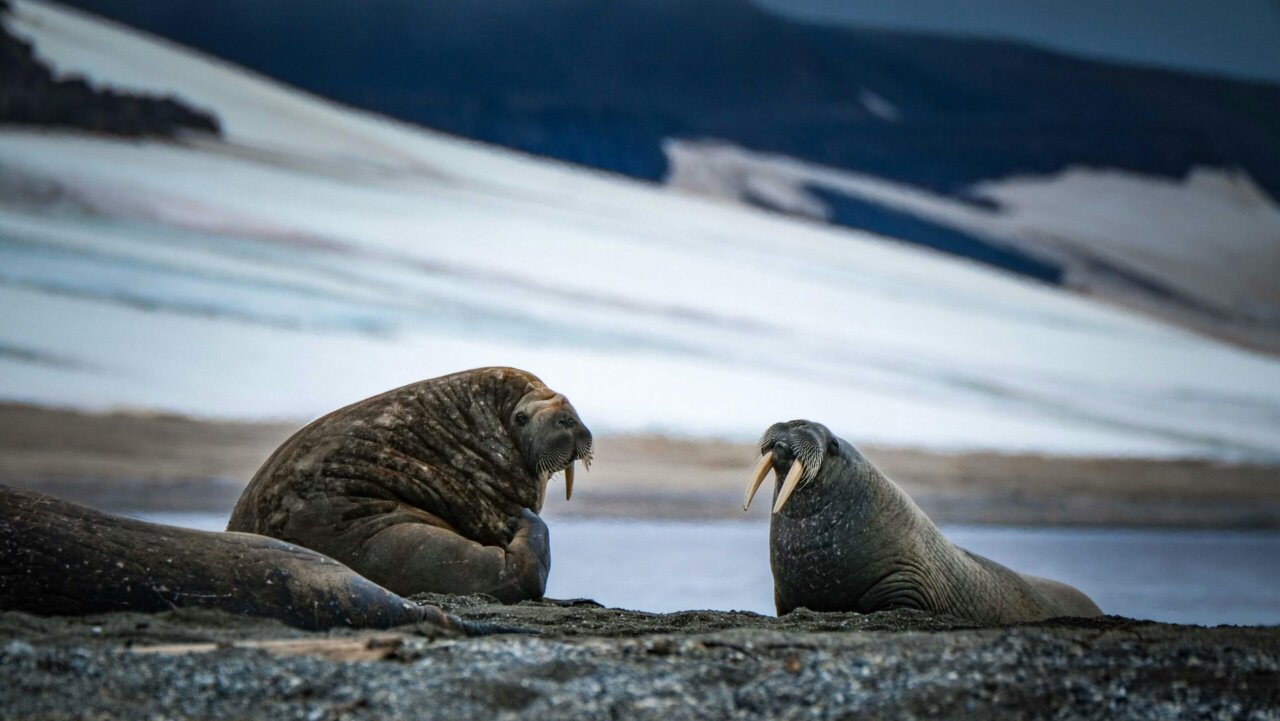
Pexels/ Francesco Ungaro
Conservation Status:
Walruses are currently listed as Vulnerable on the IUCN Red List.
Conservation Efforts:
Walruses are increasingly threatened by climate change. Elevated ocean temperatures are melting the sea ice they rely on for resting, breeding, and feeding. Conservation efforts focus on protecting key haul-out and feeding sites, reducing disturbance from shipping and industrial noise, and monitoring populations through aerial and satellite surveys. In Alaska, Indigenous co-management programs help ensure sustainable subsistence hunting, while organizations like the World Wildlife Fund and U.S. Fish and Wildlife Service advocate for Arctic protections and climate action to safeguard the species’ future.
Sources: U.S. Fish & Wildlife Service, NOAA, World Wildlife Fund, Defenders of Wildlife, and NATURE’s Walrus: Life on Thin Ice.
